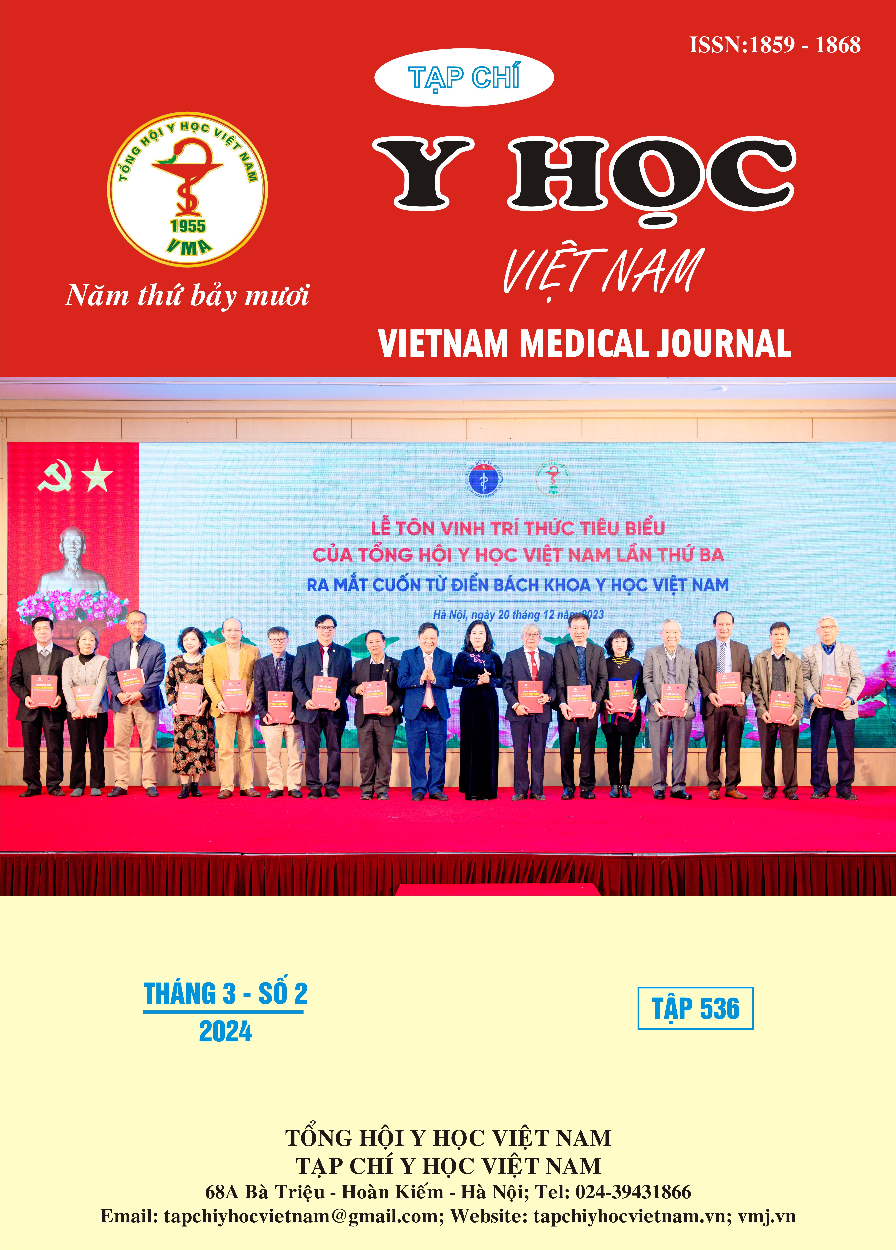RECONSTRUCTION OF HAND SOFT TISSUE DEFECTS CAUSED BY COBRA BITES USING SKIN GRAFT
Main Article Content
Abstract
Objective: To evaluate the results of plastic surgery to cover hand soft tissue defects caused by cobra bites using skin grafting. Methods: Describes a cross-sectional study on 21 patients bitten by cobras in areas of the hand with defects covered by skin grafts at the Department of Aesthetic Plastic Surgery of Bach Mai Hospital from January 2022 to July 2023. Results: The location of the cobra bite involved the fingers in 11 of 21 patients (52.4%) and the wrist in 10 of 21 patients (47.6%). Most patients bitten by cobras only had localized necrosis in the bitten area in 15 of 21 patients (71.4%), 6 of 21 patients (28.6%) had additional lesions extending centrally. Four of 21 patients (19.05%) had excision and skin grafting in a single session, with an average hospital stay of 18.5 days. Three-forths of the skin grafting in those patients survived completely and 1 patient had poor skin graft adhesion and slow healing of the incision edges. Seveteen out of 21 patients (80.95%) received skin grafting, secondary to excision and placement of a negative pressure suction system. The average hospital stay was 23.6 days, 10 of 17 patients with skin grafts that survived completely, 5 out of 17 patients had skin grafts with 80% survial and 2 patients with skin grafts had poor adhesion and slow healing of the incision edges. Conclusion: Most defects caused by cobra bites after skin excision require care to prepare the foundation for skin graft surgery. Skin graft surgery is a simple method, has good coverage if the lesions are extensive, and does not damage tendons and bones.
Article Details
References
2. Bozkurt M., Kulahci Y., Zor F., et al. (2008). The management of pit viper envenomation of the hand. Hand N Y N, 3(4), 324–331.
3. Nguyễn Kim Sơn (2000). Rắn Hổ Cắn, Cẩm Nang Cấp Cứu. Nhà Xuất Bản Học.
4. Ince B, Gundeslioglu AO. The management of viper bites on the hand. J Hand Surg Eur Vol. 2014;39(6):642-646.
5. Panda SK, Padhi L, Sahoo G. Oral bacterial flora of Indian cobra (Naja Naja) and their antibiotic susceptibilities. Heliyon. 2018 Dec 17;4(12): e01008.
6. Rha J.H., Kwon S.M., Oh J.R., et al. (2015). Snakebite in Korea: A Guideline to Primary Surgical Management. Yonsei Med J, 56(5), 1443.
7. Grace TG, Omer GE. The management of upper extremity pit viper wounds. J Hand Surg Am. 1980; 5(2): 168-177. doi: 10.1016/ s0363-5023(80) 80149-3.


